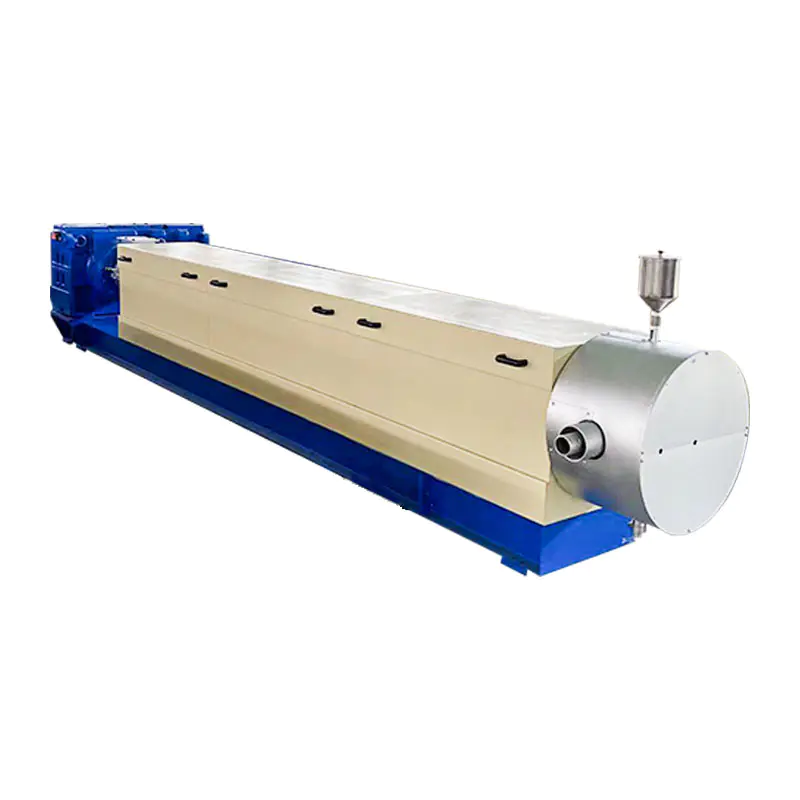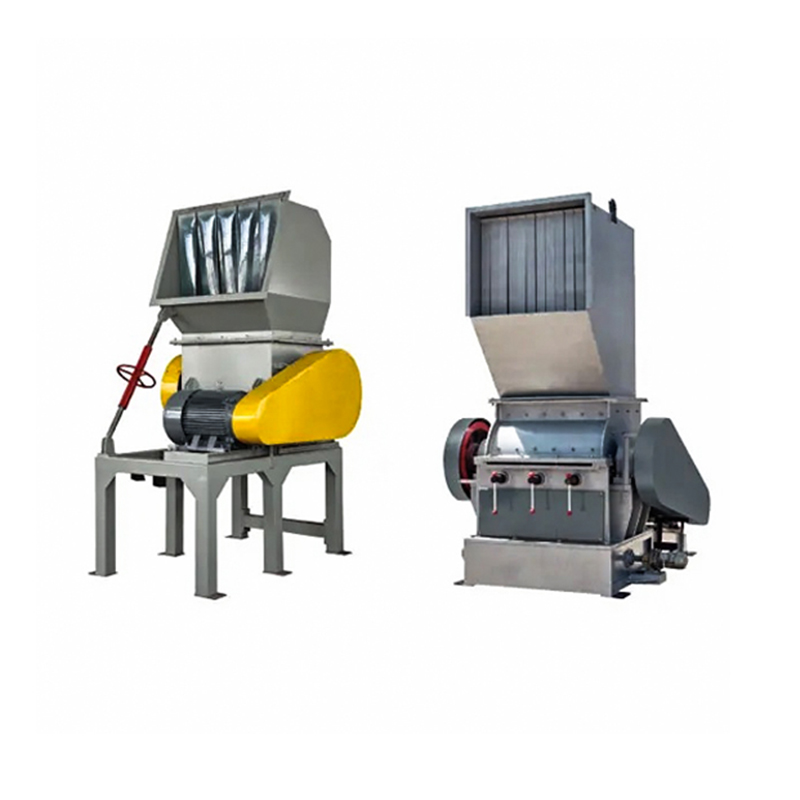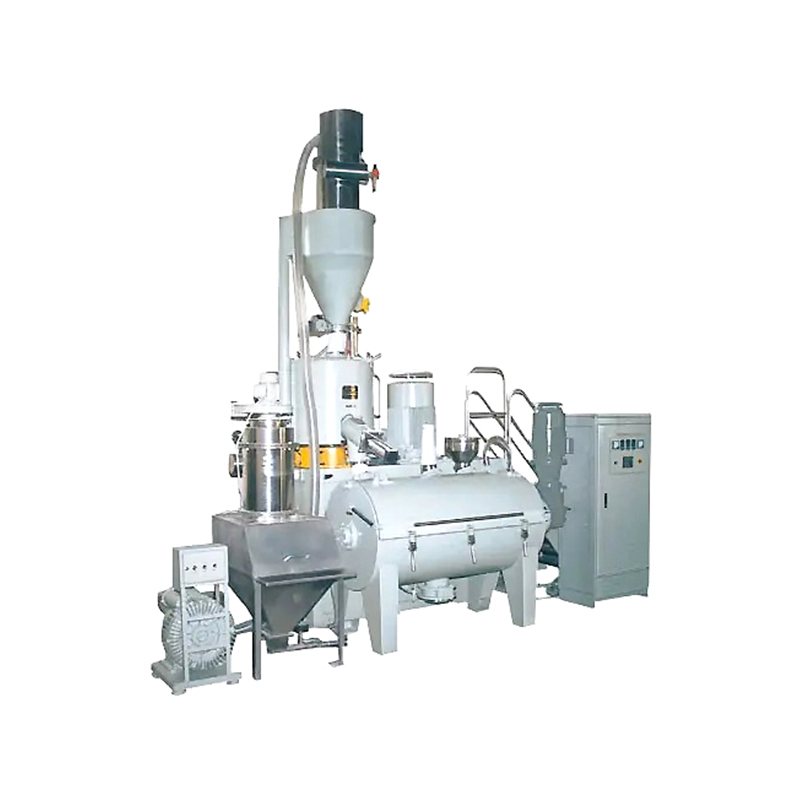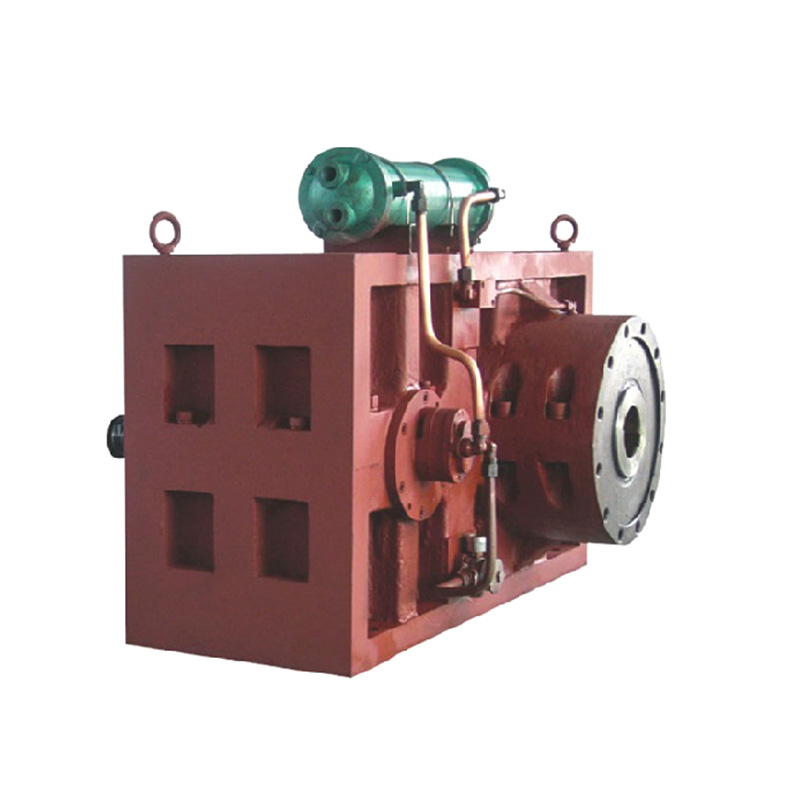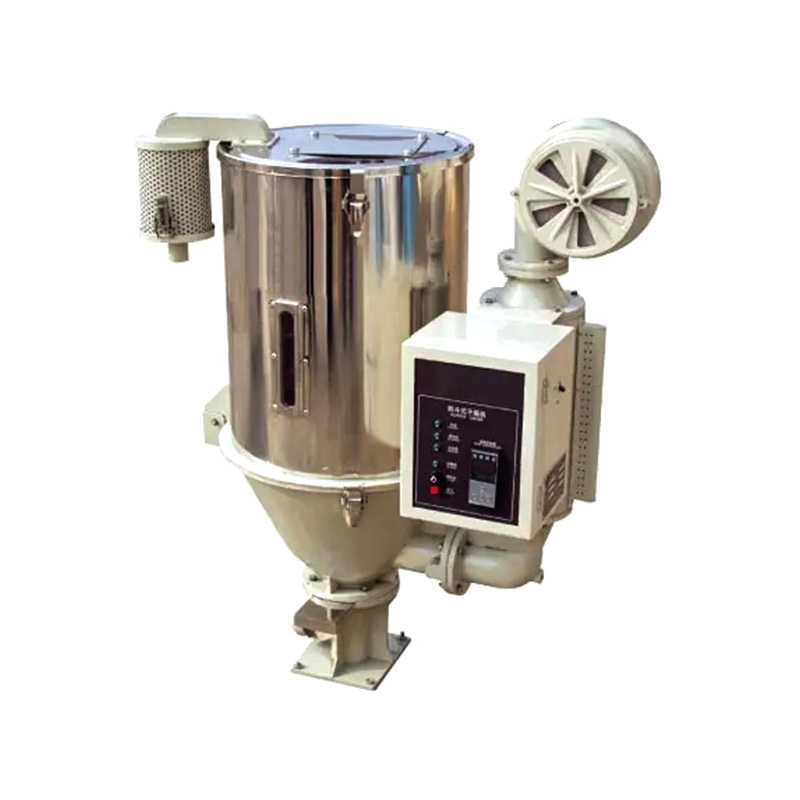Plastic pelleting machines are essential in the manufacturing of plastic products, as they convert raw plastic material into uniform pellets for further processing. Choosing the right type of plastic pelleting machine is critical to achieving the desired product quality and manufacturing efficiency. The two primary types of plastic pelleting machines are single-screw and twin-screw machines. Understanding the differences between these machines is essential for making the right choice based on production needs.
Single-Screw Plastic Pelleting Machine
Overview and Mechanism
The single-screw plastic pelleting machine operates with one screw that rotates inside a cylindrical barrel to push the plastic material through the extrusion process. As the plastic is fed into the barrel, it is melted by heat and pressure and then shaped into pellets by the die at the end of the extrusion line. This type of machine is often used for producing simple plastic products that do not require complex mixing or high shear forces.
Advantages of Single-Screw Machines
- Simplicity and Cost-Effectiveness: Single-screw machines are generally simpler in design and more affordable than twin-screw machines, making them a popular choice for small to medium-scale operations.
- Energy Efficiency: These machines typically consume less energy compared to twin-screw units, making them a more cost-efficient option for basic extrusion needs.
- Ease of Maintenance: The design of single-screw machines is less complex, which simplifies maintenance and reduces downtime.
Ideal Applications
Single-screw plastic pelleting machines are suitable for processing polymers with standard formulations and moderate viscosity, such as polyethylene (PE) and polypropylene (PP). These machines are commonly used in industries like film production and plastic injection molding.
Twin-Screw Plastic Pelleting Machine
Overview and Mechanism
In contrast, a twin-screw plastic pelleting machine uses two intermeshing screws that rotate in opposite directions inside a barrel. The dual-screw design allows for better mixing, more precise temperature control, and higher shear forces. The material is pushed and mixed more thoroughly, which makes this type of machine ideal for producing high-performance plastic pellets and working with materials that require greater processing flexibility.
Advantages of Twin-Screw Machines
- Enhanced Mixing Capabilities: The intermeshing screws in twin-screw machines allow for superior mixing of additives, fillers, and recycled materials, which is essential when dealing with complex plastic formulations.
- Higher Flexibility: Twin-screw machines can process a wider range of materials, including high-viscosity polymers and compounds with additives, such as flame retardants or colorants.
- Better Control Over Process: The design of twin-screw machines allows for more precise control over the extrusion process, including temperature and pressure regulation. This is particularly beneficial for producing high-quality, consistent pellets.
- Higher Output: Twin-screw machines are more suitable for high-volume production due to their ability to handle larger quantities of material more efficiently than single-screw machines.
Ideal Applications
Twin-screw plastic pelleting machines are often used in industries where higher quality and more complex material processing are required. These include the production of engineering plastics, masterbatches, and materials containing additives or fillers, such as flame-retardant or biodegradable plastics.
Key Factors to Consider When Choosing a Plastic Pelleting Machine
Production Volume and Speed
The required production volume plays a significant role in selecting the appropriate machine. Single-screw machines are generally better suited for lower to mid-range production volumes, while twin-screw machines are designed for higher output and more complex formulations.
Material Type and Additives
The complexity of the material being processed should also influence the decision. Single-screw machines are ideal for simpler plastic materials, while twin-screw machines offer better performance when processing high-viscosity polymers, filled compounds, or materials with additives.
Maintenance and Operational Costs
Considering the long-term maintenance and operational costs is crucial. Single-screw machines tend to have lower maintenance requirements due to their simpler design, while twin-screw machines may require more frequent upkeep, but they offer greater flexibility and control during the extrusion process.
Energy Efficiency
If energy efficiency is a key concern, single-screw machines may be more suitable due to their generally lower energy consumption. However, twin-screw machines might justify the additional energy costs with their higher output and product consistency in more demanding applications.
Conclusion
Both single-screw and twin-screw plastic pelleting machines have distinct advantages, and the decision to choose one over the other depends on the specific production needs. A single-screw machine offers a simpler, cost-effective solution for less complex applications, while a twin-screw machine provides greater versatility, higher efficiency, and better processing capabilities for more demanding material requirements. When selecting the right plastic pelleting machine, manufacturers must carefully assess production volume, material complexity, energy requirements, and budget to ensure optimal results.



 عربى
عربى



